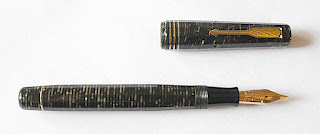Tuesday, January 31, 2017
Cuba seems to very much value the arts in education despite
lacking many of the necessary resources to support them. We began the day at a
school in Santiago de Cuba for the performing arts. Both students and faculty performed for us and
we got to talk with them during and after their show.
 |
| The young children's chorus, the director of the school is at right |
 |
| Michael Jackson alive and well in Cuba |
 |
| A group of faculty |
 |
| Office hours al fresco |
 |
| The fellow in the green shirt at center left is Jim Fitch our Road Scholar guide and all around good guy. He did a lot to create a friendly cohesive group. He claimed we made it easy and I hope we did. |
From there we headed to San Juan Hill, which features, of
course, a monument to that seminal battle in the Cuban-Spanish-American war. (Our
guide, José, was quick to point out the standard omission of Cuba in the name
of that war for independence. Point taken: Americans do not like to think of
our war for independence as only a small part of a 18th century global
Anglo-French war, which it was.)
 |
| More, even, than we do, Rosa loves battlefields, monuments, and big guns. |
Anyways, following San Juan Hill we were off to one of our
more interesting excursions, by boat to the fishing village on Granma Island
near the mouth of the Bahía de Santiago de Cuba (the bay). The fishing
community has recently faced some environmental challenges connected not just
to pollution but to global warming. They have met these and other Cuban health
issues head on, creating health and environmental programs to provide not just
clean-up but also employment.
 |
| Sadly, this was not the boat that took us out to Granma Island |
 |
| The fellow in the blue shirt, Pedro, seemed to be the leader and was spokesman for the group |
 |
| We had birthdays that day and Pedro's wife baked a cake |
 |
| 1955 Chevy in unusually nice cosmetic condition, including original colors. |
From there we were off to the Faro del Morro, the fortress
that guarded this important colonial bay. What can I say? I love photographing
old fortresses.
 |
| Six members of our group |
Our final stop of the day was in response to a near-revolt
on the part of several of us when, the day before we drove past the Moncada
barracks. It was there on July 26, 1953 that a group of rebels led by the young
attorney Fidel Castro Ruiz attacked the government, setting off a chain of
events that would lead to the overthrow of the Batista dictatorship and the
Cuban Revolution of 1959. While we did not get a full visit to the museum, we
got time to prowl and photograph.
 |
| Moncada |
 |
| Today, a museum and school |
 |
| Apparently the bullet holes are not the originals. The Batista government covered them over, and in 1960 the new government uncovered them and turned the barracks into a school. |
Another full and fascinating day.




























Comments